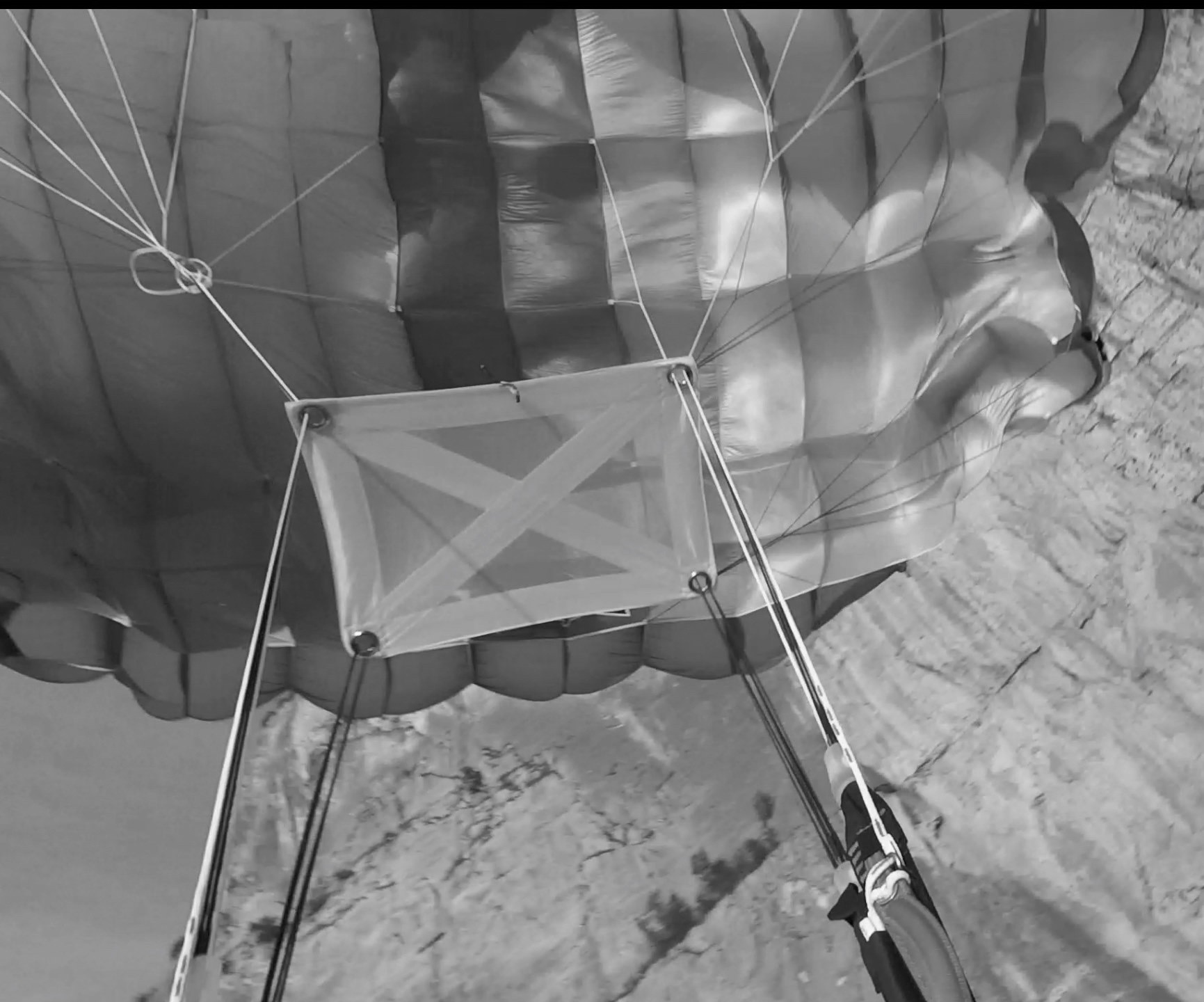(I already posted this on the Zuckerbook)
*if you disagree please reply below, the dialogue will be useful for everyone
This season there seems to have been an increase in the number of tension knots. I was also asked to inspect gear and video from a tension knot that resulted in a cliff strike. So I thought it wouldn’t hurt to write something down with the aim of reducing the chance of injury when this occurs to you.
“To me!?” you say!? Better to be ready for it with a small but healthy level of paranoia than denying the possibility. Ask the experienced jumpers you know, most people with a thousand BASE jumps have usually had one. Modern BASE jumpers jump a lot, when I started 300 jumps was a career, now 300 jumps is 2 seasons! This malfunction is rare but it is better to prepare for it making you *adopt epic 90s movie trailer voice* “Hard to Kill”, to quote the title of the 1990 Steven Seagal movie.
Tension knots normally occur between the brake line cascade and the corresponding C-D lines. (*but can also occur in the front line sets)
Why do they occur? The brake line whips against the C-D lines during the inevitable chaos that is part of every parachute deployment and every now and then the brake line loops round and back through itself forming the knot. Depending on the where the knot forms the rotation speed can be very fast, speeds of 30rpm or more are possible.
Talk to any tandem instructor and he will tell you that canopies with worn out furry lines are more prone to tension knots, that said the canopy that had the tension knot / cliff strike was brand new. They have occurred on all brands and models of canopy AND on all line types, new and old, tail gate or non - BUT they do seem to occur mostly on sider up jumps.
“Isn’t there a way to prevent them? Like using lasers, nano-technology and KY jelly?” you ask.
With the aim of preventing tension knots I would do the following:
-always untwist your brake lines
-change your lines when they have visible “fuzz” wear (ask your rigger)
-maintain symmetry and line tension during packing
-stow the lines cleanly in the tail pocket
As the name suggests, once tension is removed the knot usually disappears instantly, physical examples of the knots are very rare.
This is also the key to trying to resolve a tension knot as we shall see below.
Scenario 1: You open low or close to the object
As you don’t have time or space to try and release the tension knot the best option is to stop the rotation by pulling on the opposite brake line. This will often mean the canopy is close to stalling. Keep the canopy above your head and if possible aim for something soft i.e. long grass, cow manure, trees or the jumper before you and perform a PLF (parachute landing fall).
Scenario 2: You open high and with space
Round 1: stop the rotation with the opposite brake, check your position, altitude and potential landing areas (underneath). Pump the brakes, slow and deep, fast and aggressive, pump the rear risers, stall the canopy till collapse on the rear risers.
Round 2: stop the rotation with the opposite brake, again check your position, altitude and potential landing areas (underneath). Repeat as above as time / altitude allows. If the knot still doesn't clear follow scenario 1. Keep it straight, aim for something soft and PLF.
I had a tension knot a few years ago, the canopy immediately began to spin fast after opening and continued to accelerate. I managed to stop the rotation with the opposite toggle and it took about 20 seconds of fighting to clear the knot using a rear riser stall and brakes. Luckily I had opened high.
I hope that the BASE community and manufacturers will identify methods to further reduce the occurrence of tension knots in the future.
In summary:
1. Pull high enough to give yourself some time to deal with equipment malfunctions!
2. Fight! Don’t let the canopy spin you into the terrain. If time allows; pump the brakes, pump the risers, stall the canopy on rear risers. If the knot can’t be cleared stop the rotation with the opposite brake, aim for the softest thing underneath you and perform a PLF.
3. Practice toggle and risers stalls at a safe altitude
Video of a lucky escape:
https://www.facebook.com/...s/10214745984578866/
BASEstore.it
